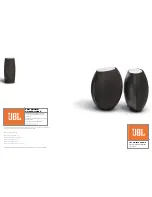
g-1
GLOSSARY
HT4100 Instruction Manual: Operation
AC
Alternating Current. Motion of current alternately in one direction, then the other.
The number of times per second the direction changes (the "frequency") is measured
in hertz.
amp
Amperes. Measurement of the electron flow (the number of electrons per second) in
an electrical circuit.
anode
The "positive" (+) side of a DC power source. Electrons leave the cathode and move
toward the anode; ions move in the opposite direction. Plasma cutting requires the
work and the nozzle to be the anode, and the electrode to be the cathode.
arc
Motion of electricity in a gas.
AWG
American Wire Gauge. Defines the diameter of wires.
bar
A unit of pressure equal to one million dynes per square centimeter.
breaker
A device which interrupts an electrical current if the current exceeds a preset
amperage setting. Breakers can be returned to their conducting (non-interrupting)
state by some mechanical action, such as flipping a switch.
cap
Nozzle retaining cap. Holds the swirl ring, electrode and nozzle inside the torch.
capacitor
A device that stores electric energy in the form of voltage.
cathode
The "negative" (-) side of a DC power source. (See anode)
consumable
Electrode, nozzle, swirl ring and retaining cap.
CSA
Canadian Standards Association. A product standards and testing agency.
current
Movement of electricity, measured in amperes. Current is said to move in a direction
opposite that of electron flow.
DC
Direct Current. Motion of current in one direction only, from anode (+) to cathode (-).
dross
Globs of metal hanging around the kerf, usually on the bottom side.
duty cycle
Percentage of on-time (measured in minutes) in a 10 minute period in which a device
can be operated.
electricity
Fundamental property of atoms that atoms can have their electrons pulled away
("ionized") and then the electrons can move about in metals or gases. An atom
missing one or more electrons is called an ion. Both electrons and ions can move
about in gases.



































